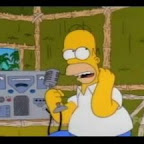



The average age of the 659,000 licensed ham operators in the United States is in the 60s, according to the American Radio Relay League, a national association for enthusiasts, based in Newington, Conn (2007)
And with age comes a love for tradition and to re-live the past.
"Amateur Radio used to be technology leaders. Today its the last bastion of otherwise obsolete 'museum modes' like AM, CW and ATV while the real world technologies of digital wide band modes are exploding. Not that having a place for museum modes is bad -- in my opinion we just shouldn't hold on to them at the expense of the future." --Bill - WA7NWP. (Mar 18, 2007 to the digitalradio yahoo group)
Amateur Radio is supposed to be an exciting cutting-edge communications technology hobby where you are free to explore the latest communications techniques and communicate with other Amateur Radio operators, or "Hams" all over the world using any methods the operator chooses.
The Average age of the members of the ARRL board of directors
15 Directors - average age 64.3 (range 49 to 82)
15 Vice Directors - average age 56.7 (range 27 to 65)
ARRL President Joel Harrison W5ZN is 49, and the youngest ever ARRL President. The ten ARRL Officers average 60 years old.
The average ARRL member is 55-60 years old.
Ten years ago, the average licensed ham was around 50 years old. And going back even further, in 1985 the average ham was 46 years old (per 73 magazine)....
And going back even further yet... The ARRL, paid an independent survey company in 1960 to do a study of amateur radio. The report showed that 80% of all ham newcomers were teenagers, with 50% being either 14 or 15 years old. (Further, they found that 80% of these newcomers ended up pursuing high-tech careers as a result of their interest in amateur radio.)
I think a new ham radio appearance would help to make the hobby more appealing. If you ask me, it needs to be more appealing for younger folks if the hobby is expected to survive.
So to do my very small part, I have been pointing out ham radio in popular culture. Specifically in the Simpson's, and other "cartoon" shows.
See:
http://www.qsl.net/kb9mwr/files/ham/cartoon/cartoon.html
{Edit 2010}
CQ Magazine recently did a survey of their "fans" on Facebook and found the average age was 45.
In the Remote Operating for Amateur Radio book published by the ARRL in 2010, the first chapter, "The case for Internet Remote Control," states "At the time of this writing, the average ham was edging into his or her sixth decade on the planet; many amateurs are older still."
{2014}
Atlantic Division
Director: Bill Edgar, N3LLR Born: 1952
Vice Director: Tom Abernethy, W3TOM Born: 1952
Central Division
Director: George R. Isely, W9GIG Born: 1939
Vice Director: Kermit Carlson, W9XA Born: 1956
Dakota Division
Director: Gregory P. Widin, K0GW Born: 1952
Vice Director: Kent Olson, KA0LDG Born: 1963
Delta Division
Director: David Norris, K5UZ Born: 1961
Vice Director: Ed Hudgens, WB4RHQ Born: 1944
Great Lakes Division
Director: Jim Weaver, K8JE Born: 1935
Vice Director: Dale Williams, WA8EFK Born: 1940
Hudson Division
Director: Mike Lisenco, N2YBB Born: 1953
Vice Director: William Hudzik, W2UDT Born: 1947
Midwest Division
Director: Cliff Ahrens, KØCA Born: 1945
Vice Director: Rod Blocksome, KØDAS Born: 1945
New England Division
Director: Tom Frenaye, K1KI Born: 1950
Vice Director: Mike Raisbeck, K1TWF Born: 1949
Northwestern Division
Director: Jim Pace, K7CEX Born: 1943
Vice Director: Bonnie Altus, AB7ZQ Born: 1955
Pacific Division
Director: Bob Vallio, W6RGG Born: 1936
Vice Director: Jim Tiemstra, K6JAT Born: 1955
Roanoke Division
Director: Dennis Bodson, W4PWF Born: 1967
Vice Director: Dr. James Boehner, N2ZZ Born: 1955
Rocky Mountain Division
Director: Brian Mileshosky, N5ZGT Born: 1980
Vice Director: Dwayne Allen, WY7FD Born: 1962
Southeastern Division
Director: Doug Rehman, K4AC Born: 1963
Vice Director: Michael Lee, AA6ML Born: 1956
Southwestern Division
Director: Richard J. Norton, N6AA Born: 1941
Vice Director: Marty Woll, N6VI Born: 1950
West Gulf Division
Director: Dr David Woolweaver, K5RAV Born: 1942
Vice Director: John Robert Stratton N5AUS Born: 1947



















